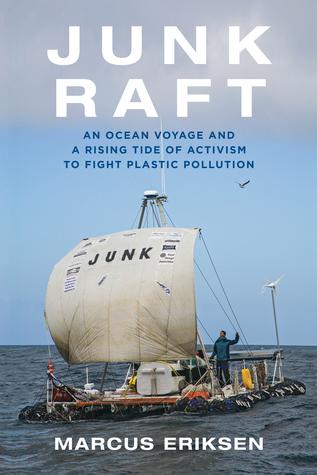Junk Raft
Statistics show us, plastic production during World War II was zero. By 1972 plastic production rose to 40 million tons, and it is estimated by 2050 the production will reach 1 billion tons. The United States recycles only 9.2 percent of the countries plastic. The non-recyclable plastics are exported to countries who do not have strict environmental regulations or health regulations for the workers who process the plastic. China and India take these plastics and return them back to United States in some form of a product.
Most people are not interested in these staggering statistics but what’s more daunting is many of these plastics are dumped into the ocean where they break down into micro-plastics or nanoplastics. It is estimated 35% of the fish in the ocean have plastic in their stomachs. By 2050 99% of all seabirds will have ingested plastics.
Marcus Eriksen, a Gulf War veteran, thought the problem was so important he and Joel Paschal constructed a raft out junk. Their goal was to leave Los Angeles and finish in Hawaii, on their way, they would study how pollution is affecting the ocean. The raft was construct out of 15,000 plastic bottles and a Cessina airplane fuselage to act as a cabin. The journey is 2,600 miles and it took them 88 days to complete. The Trip to Hawaii was not an easy one, as they had to confront cyclones, slow currents, and not much seafood in the ocean which they had planned to eat when their food ran low.
The amount of plastics and trash found in the middle of the ocean was even more then Eriksen expected. This “plastic smog” is changing the ecosystem. Eriksen, isn’t alone, as there is hundreds of volunteers working to clean-up the disaster.
The story sounds depressing but the book is encouraging and entertaining as Eriksen and Paschal talk about their adventure in the Pacific. Eriksen is very positive on the future of the plastic industry changing their course of action and the human population making changes too.
Marcus and his wife, Ann, founded the institute, 5 Gyres Institute as a commitment to marine conservation and with the work of the volunteers the ocean has a chance to survive.
I enjoyed the book and I learned many new things about pollution and how it affects everyone. I felt like I was on the raft and encountered all the difficulties he did. Highly recommended.
